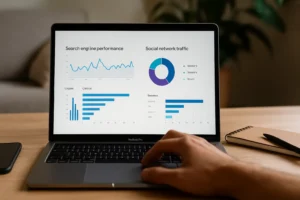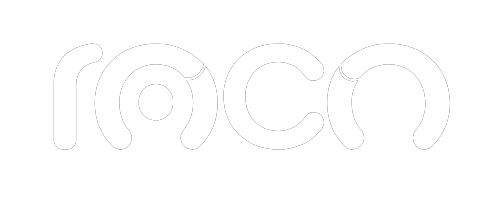In today's business environment, understanding the concept of marketing is essential for any organization seeking to connect with its audiences, generate value, and grow sustainably. Although it's a widely used term, its meaning goes far beyond simply promoting products or services.
In this article, we'll explain what marketing is, how it has evolved over time, and what elements it comprises today, especially in its digital form.
What is the Concept of Marketing?
To fully understand the concept of marketing, it is necessary to analyze its formal definition and its practical application. According to the American Marketing Association (AMA)Marketing refers to the set of activities, institutions, and processes aimed at creating, communicating, delivering, and exchanging offerings that have value for consumers, customers, partners, and society at large.
Simply put, marketing is the link between what the market needs and what a company can offer. It goes beyond selling; it involves understanding the consumer, planning, communicating, and generating value. Furthermore, the concept of marketing evolves with technology and environmental changes, integrating digital tools that allow each action to be measured, personalized, and optimized in real time.
Evolution of Marketing: Traditional Approach to the Digital Environment
For much of the 20th century, marketing relied on traditional media such as print, radio, television, and outdoor advertising. These strategies were one-way: brands communicated, and consumers simply received the message, with no room for direct interaction or feedback.
With the expansion of the internet, the landscape changed dramatically. Digital marketing introduced two-way communication, where it's no longer just the company that speaks, but the consumer also responds, gives his opinion, and actively participates. Furthermore, tools such as segmentation, automation, and data analysis were incorporated. Understanding the concept of marketing in this digital age involves integrating these resources with traditional foundations to create more precise, measurable, and user-centered strategies.
Fundamental Components of Current Marketing
1. Market research
One of the basic pillars of marketing is understanding the environment. Market research allows you to gather and analyze information about consumers, competitors, and trends. Thanks to this tool, brands can make informed decisions about products, prices, distribution channels, and messages.
A company that thoroughly understands its audience will be more likely to develop successful solutions. Therefore, any solid definition of marketing must include this analytical and strategic stage.
2. Segmentation and positioning
The segmentation It consists of dividing the market into groups of consumers with similar characteristics (demographic, geographic, psychographic, etc.). This segmentation allows for the design of more relevant messages and offers.
Positioning, on the other hand, refers to how a brand wants to be perceived by its customers. Is it innovative, accessible, luxurious, sustainable? Defining this identity and communicating it consistently across all touchpoints helps it stand out in a saturated market.
3. Marketing strategy and mix
Once the data and audience have been defined, it's time to plan a strategy. This is where the marketing mix, composed of the 4 Ps, comes into play:
- Product: what is offered, with its attributes and benefits.
- Price: how much the customer pays for that value.
- Square (distribution): where and how the product or service is delivered.
- Promotion: how to communicate to the public.
Today, some experts have expanded this model to the 7Ps, including People, Processes, and Physical Evidence, especially in service environments.
Digital Marketing: Tool of the Present
Any modern analysis seeking to explain the concept of marketing must include the impact of the digital environment. Companies employ multiple channels and technologies to reach their audiences more effectively. Among the most relevant digital strategies are:
SEO (Search Engine Optimization)
SEO involves optimizing websites to improve their visibility in search engines like Google. A good SEO organic positioning It allows you to consistently attract quality traffic, which makes SEO a fundamental part of any digital strategy.
international Google Ads
Pay-per-click (PPC) campaigns, such as those managed through international Google Ads, allow for immediate visibility. They are especially useful for promotional campaigns, launches, or for reinforcing brand recognition with highly targeted segmentation.
Content Marketing
Creating useful, educational, and relevant content is one of the best ways to connect with your audience. Blogs, infographics, videos, ebooks, and guides help position your brand as a leader in your industry, while boosting SEO and building user loyalty.
Importance of Understanding the Concept of Marketing
A thorough understanding of marketing allows you to make better decisions, build strong customer relationships, and adapt to changing environments. It's not just about selling, but about generating long-term value.
Marketing, when executed well, has the power to transform a company: it gives it identity, direction, and tools for strategic growth. It also allows it to measure results, optimize investments, and offer personalized experiences—all essential aspects of the digital economy.
Boost Your Strategy with Well-Focused Marketing!
Now that you have a better understanding of the concept of marketing, it's time to take your strategy to the next level. Agencia RocoWe help you position your brand at the top of search results with effective and customized SEO solutions. Take the next step with a well-structured strategy.





